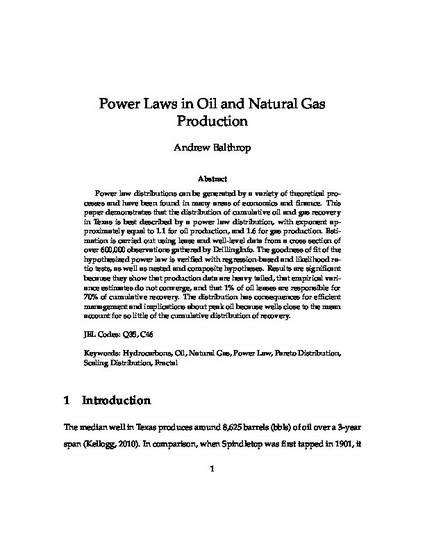
Article
Power Laws in Oil and Natural Gas Production
Empirical Economics
(2016)
Abstract
Power law distributions can be generated by a variety of theoretical processes
and have been found in many areas of economics and finance. This
paper demonstrates that the distribution of cumulative oil and gas recovery
in Texas is best described by a power law distribution, with exponent approximately
equal to 1.1 for oil production, and 1.6 for gas production. Estimation
is carried out using lease and well-level data from a cross section of
over 600,000 observations gathered by DrillingInfo. The goodness of fit of the
hypothesized power law is verified with regression-based and likelihood ratio
tests, as well as nested and composite hypotheses. Results are significant
because they show that production data are heavy tailed, that empirical variance
estimates do not converge, and that 1% of oil leases are responsible for
70% of cumulative recovery. The distribution has consequences for efficient
management and implications about peak oil because wells close to the mean
account for so little of the cumulative distribution of recovery.
Keywords
- Hydrocarbons,
- Oil,
- Natural Gas,
- Power Law,
- Pareto Distribution,
- Scaling Distribution,
- Fractal
Disciplines
Publication Date
Winter December 1, 2016
Citation Information
Andrew Balthrop. "Power Laws in Oil and Natural Gas Production" Empirical Economics Vol. 51 Iss. 4 (2016) p. 1521 - 1539 Available at: http://works.bepress.com/andrew-balthrop/2/
